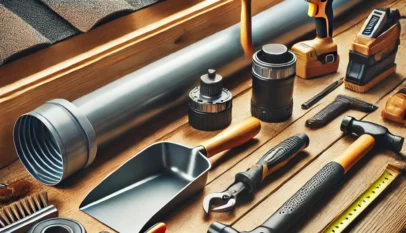
Mini excavators are an essential tool for many construction and landscaping projects, providing the power and versatility needed for tasks like digging, grading, and demolition. Renting a mini excavator can be a cost-effective solution for businesses and contractors who need heavy-duty equipment without the long-term commitment of purchase. With a variety of models available, users can easily find a rental that fits their specific project requirements.
The convenience of Mini Excavators for Rent allows access to the latest models equipped with advanced technology, improving efficiency and safety on the job site. This flexibility is particularly appealing for those who manage multiple projects or face fluctuating workloads. By opting for rental, one can minimize maintenance costs and avoid storage issues associated with owning heavy machinery.
Whether one is a seasoned contractor or a DIY enthusiast, understanding the benefits and options available for mini excavator rentals can make a significant impact on the success of a project. From small residential tasks to large commercial undertakings, renting offers the right equipment to get the job done efficiently.
Understanding Mini Excavator Specifications
Mini excavators are essential in construction and landscaping projects. Key specifications help operators choose the right machine for specific tasks, ensuring efficiency and effectiveness.
Size and Weight Considerations
Size and weight are crucial when selecting a mini excavator. Typically, these machines weigh between 1,500 to 10,000 pounds, impacting their mobility and stability. A lighter model is suitable for small, tight sites, while heavier models can handle larger loads.
Compact dimensions, often less than 5 feet wide, allow access to confined spaces. Proper weight distribution enhances stability, especially when performing tasks like digging or lifting.
Digging Depth and Power
Digging depth varies among mini excavators, generally from 5 to 15 feet. This measurement indicates how deep the machine can dig, influencing the scope of work it can perform.
Power is often specified in horsepower and hydraulic flow rate. A higher horsepower usually translates to increased efficiency in tougher soil conditions. Typical hydraulic flow rates range from 10 to 20 gallons per minute, affecting the performance of attached implements like augers or thumbs.
Attachments and Accessories
Attachments expand the versatility of mini excavators, making them adaptable for various tasks. Common options include buckets, hydraulic breakers, and grapple attachments.
Choosing the right attachments depends on the nature of the job. For instance, a wider bucket facilitates moving large amounts of soil while a breaker is ideal for demolition tasks.
When renting mini excavators, confirming compatibility with desired attachments is essential. Accurate specification matching ensures optimal performance and efficiency in project execution.
How to Choose the Right Mini Excavator
Selecting the appropriate mini excavator involves assessing project requirements, budgeting effectively, and ensuring operator comfort and safety. Each factor plays a critical role in making a suitable choice.
Project Requirements Assessment
Understanding the specific demands of a project is essential. The first step is to determine the type of work to be done, such as digging, grading, or demolition.
Consider the following factors:
- Operating Weight: Heavier models provide stability and power for tough jobs but may be less nimble in tight spaces.
- Dig Depth: Evaluate how deep the excavator needs to dig; most mini excavators can reach depths of 5 to 12 feet.
- Attachment Options: Check if the excavator can accommodate specific attachments like buckets or grapples for versatility.
Assessing ground conditions and accessibility is crucial. A narrower machine may be required for limited access areas, while wider units can handle larger loads efficiently.
Budgeting and Rental Costs
Budgeting is a vital aspect of choosing a mini excavator. Rental prices can vary based on size, rental duration, and associated fees.
Key cost considerations include:
- Rental Duration: Short-term rentals typically cost more per day compared to long-term contracts, which might offer discounts.
- Delivery and Pickup Fees: Include transportation costs in the budget, as they can significantly affect the overall expenditure.
- Insurance and Damage Waivers: Often recommended to protect against potential damages. Review the terms carefully.
Creating a detailed budget helps ensure the project remains financially viable. Comparing rental costs from different providers can lead to better rates and services.
Operator Comfort and Safety Features
Operator comfort and safety should not be overlooked. A well-designed cab can enhance productivity and reduce fatigue during long hours.
Important features to consider include:
- Seat Quality: An adjustable seat with cushioning provides better support.
- Visibility: Superior visibility from the cab is crucial for safe operation and awareness of surroundings.
- Safety Features: Look for models with backup alarms, seat belts, and protective structures, such as ROPS (Roll-Over Protective Structure).
Investing in an excavator that prioritizes comfort and safety ensures both efficiency and peace of mind for the operator.
Recycling Drop Off Near Me: Your Guide to Local Eco-Friendly Solutions
Finding a nearby recycling dropoff location can be a crucial step in contributing to envir…









